

Successful SEO Requires Integrated Marketing Strategy
Optimizing for search engines is more successful when you leverage multiple channels and best practices to capture your targeted search audiences.
In case you missed it, the old SEO tactic of “keyword stuffing” your websites and online content fell out of vogue years ago.
The algorithms powering search engines have become far more sophisticated in recent years, accounting for hundreds of signals used to rank and identify which websites are best suited to answer search users' queries. The complexity of these algorithms makes it challenging to understand how they work, and that makes them harder to leverage as marketing channels.
The cat-and-mouse game of "outsmarting" competitor brands similarly vying for attention and visibility in Google Search–and now in emerging AI platforms like ChatGPT, Copilot, and Perplexity–requires numerous tools, a broad perspective, attention to detail, and diverse skills. It takes a multi-disciplined approach that combines technical excellence, high-quality content, and cross-channel distribution.
Here's a look at what it really takes, now and moving forward, to holistically position your website and content to be ranked higher in search result pages on Google, or to be cited in generative AI answers.
The Benefits of an Integrated SEO Strategy
Is SEO really worth the effort? After all, it takes a lot of thought, consideration, and actual work to put it an effective SEO strategy in motion. For businesses that rely on search traffic to their websites, the answer is a resounding “yes,” and there are real benefits you can expect when your SEO plan comes to fruition.
1. SEO Drives Business Growth
If your business doesn’t show up online, it might as well not exist—or that’s how the world sees it.
Today, 53% of all website traffic comes from organic search, making SEO the most significant driver of online visibility. If your brand isn’t ranking well, you’re leaving potential customers on the table—customers who are actively searching for what you offer.
SEO is about more than reigning supreme in search engine results pages. It’s also about building credibility. Studies say 91% of marketers report that SEO positively impacts their website performance and marketing goals.
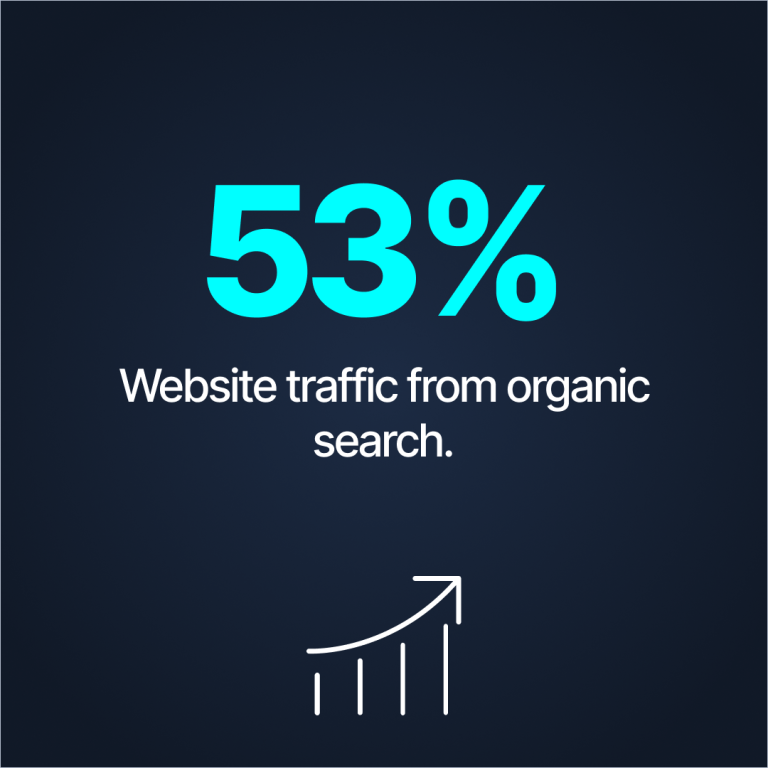
When your brand appears in organic search results, especially at the top, users perceive it as more trustworthy than the nearby sponsored link results.
Even better, 33% of global consumers discover new brands through search engines. That’s a third of customers finding businesses not because of ads but because those businesses have established a strong organic presence.
An integrated SEO strategy ensures that your website isn’t just floating in a digital abyss. A well-executed strategy positions your website to be found, clicked, and explored.
In other words, an integrated marketing strategy eliminates the need to chase customers with paid ads. Customers come to you organically at a fraction of the cost.
2. SEO Improves Audience Engagement
SEO does more than just invite users to click on your web pages. It also helps to keep your website visitors engaged.
An optimized website helps visitors find relevant, high-quality information that answers their questions, helps establish trust, and guides them toward action.
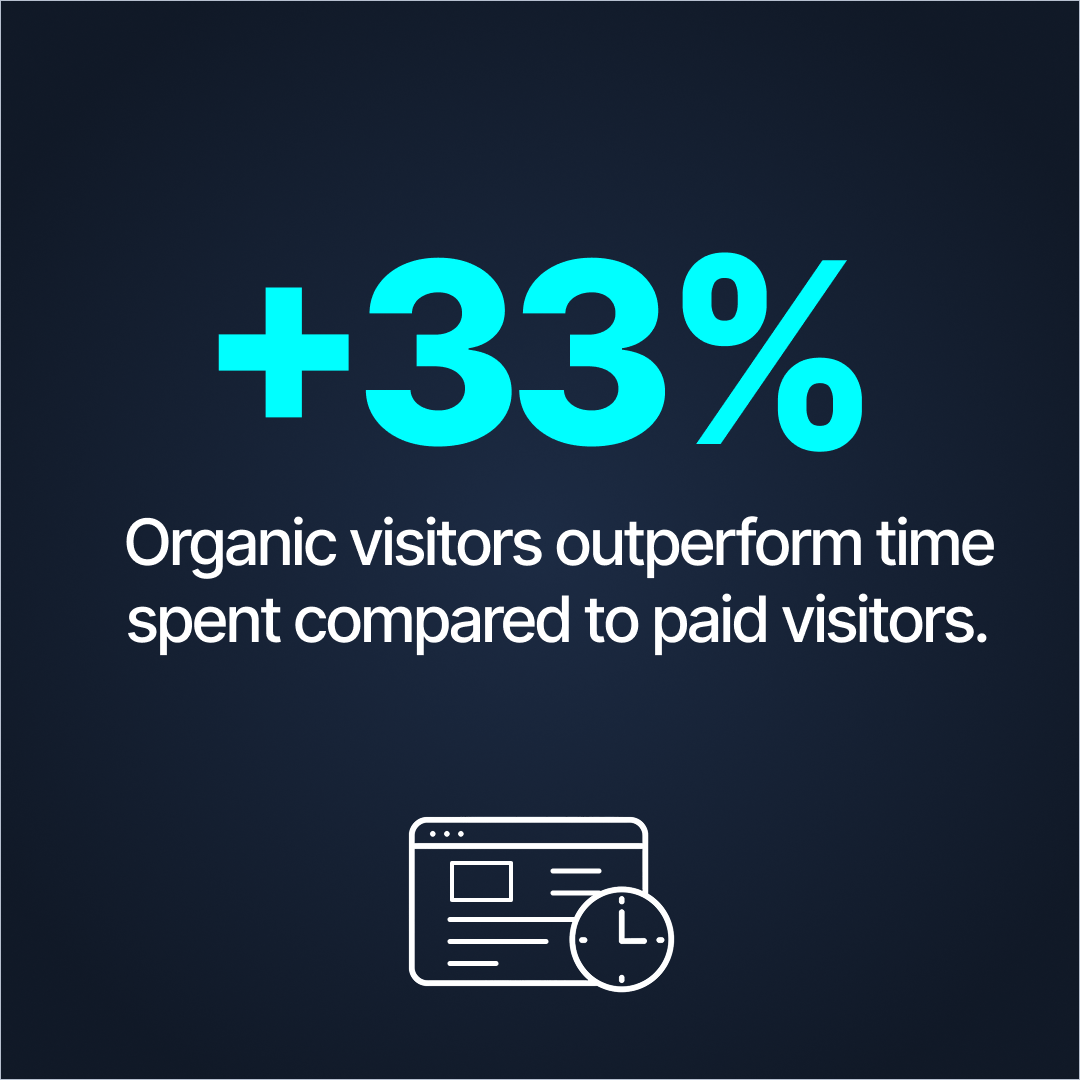
An integrated SEO approach achieves optimum user engagement by ensuring your content is structured for easy navigation.
An integrated SEO strategy wrapped in a user-friendly design combines interlinking, strong site architecture, and intuitive navigation, boosting rankings while keeping visitors engaged, exploring, and converting.
3. SEO is More Cost-Effective Than Paid Ads
Every business wants the best return on investment (ROI) for their marketing budget, yet many default to paying for search positioning because they either don’t know how to do it well, don’t have time to wait for it to blossom organically, or don’t have the resources to pull it off. And so they turn to what they know and can measure with precision: Paid search advertising campaigns.
There are two main problems with paid search strategies: Paid search ads are an ongoing cost with an ephemeral result, and they don’t improve brand positioning or perception.
While paid search ads may drive quick traffic, they are merely an expense, like a subscription. Once you stop paying, the ad disappears–and your traffic along with it. In contrast, “organic SEO”–which just means producing and publishing content with the quality and technical optimization that meets best practices–provides long-term search performance that endures with minimal maintenance over time.
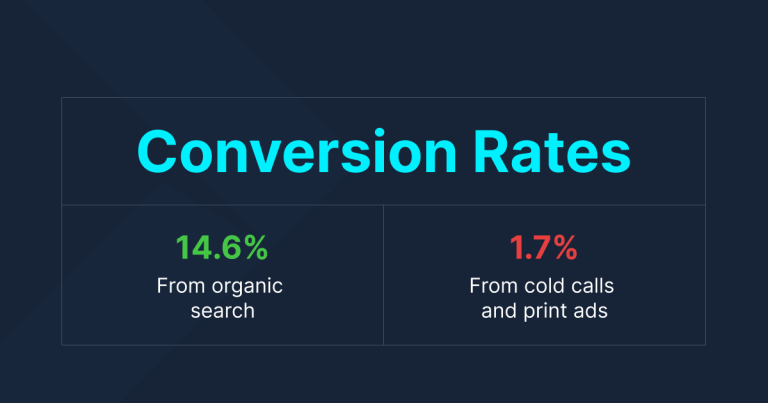
Meanwhile, when search ads do show up, they may create brand awareness, but they don’t add credibility.
After all, anyone can bid for ads on Google. But when you earn high rankings and visibility in Google Search organically, that indicates your brand is more trusted–paid ads merely prove you are a customer.
Meanwhile, research shows that organic search generates more revenue than paid search for 70% of businesses.
In fact, industry research indicates organic SEO can yield about 2X the ROI of paid search on average – one poll found organic campaigns produced an 8× return on investment, versus about 4× for PPC campaigns (seoprofy.com). In monetary terms, that means every $1 spent on SEO can average over $22 in revenue return, according to aggregated case data (explodingtopics.com).
Even better, inbound leads from search convert at a rate of 14.6%, while outbound marketing efforts—like cold calls and print ads—only convert at 1.7%.
Think of organic SEO like dollar-cost averaging in investing. Instead of chasing short-term spikes with paid ads, a strategic investment in content and SEO compounds benefits over time in the form of sustainable traffic and conversions (i.e., lead generation). The longer you stay committed, the greater the return, making an integrated organic SEO strategy a smart, cost-effective path to long-term success.
Real-World Wins Demonstrate Integrated SEO Works
At DBS Interactive, we’ve proven this approach works by delivering impressive SEO results for clients like Kao Collins and Mighty Small Homes. While they operate in different industries, their integrated marketing strategies combine technical SEO, content marketing, web development, PR, and more.
These holistic approaches have driven significant traffic growth, higher search rankings, and substantial increases in new business leads and conversions for both companies.
1. Kao Collins – From Obscurity to Market Dominance
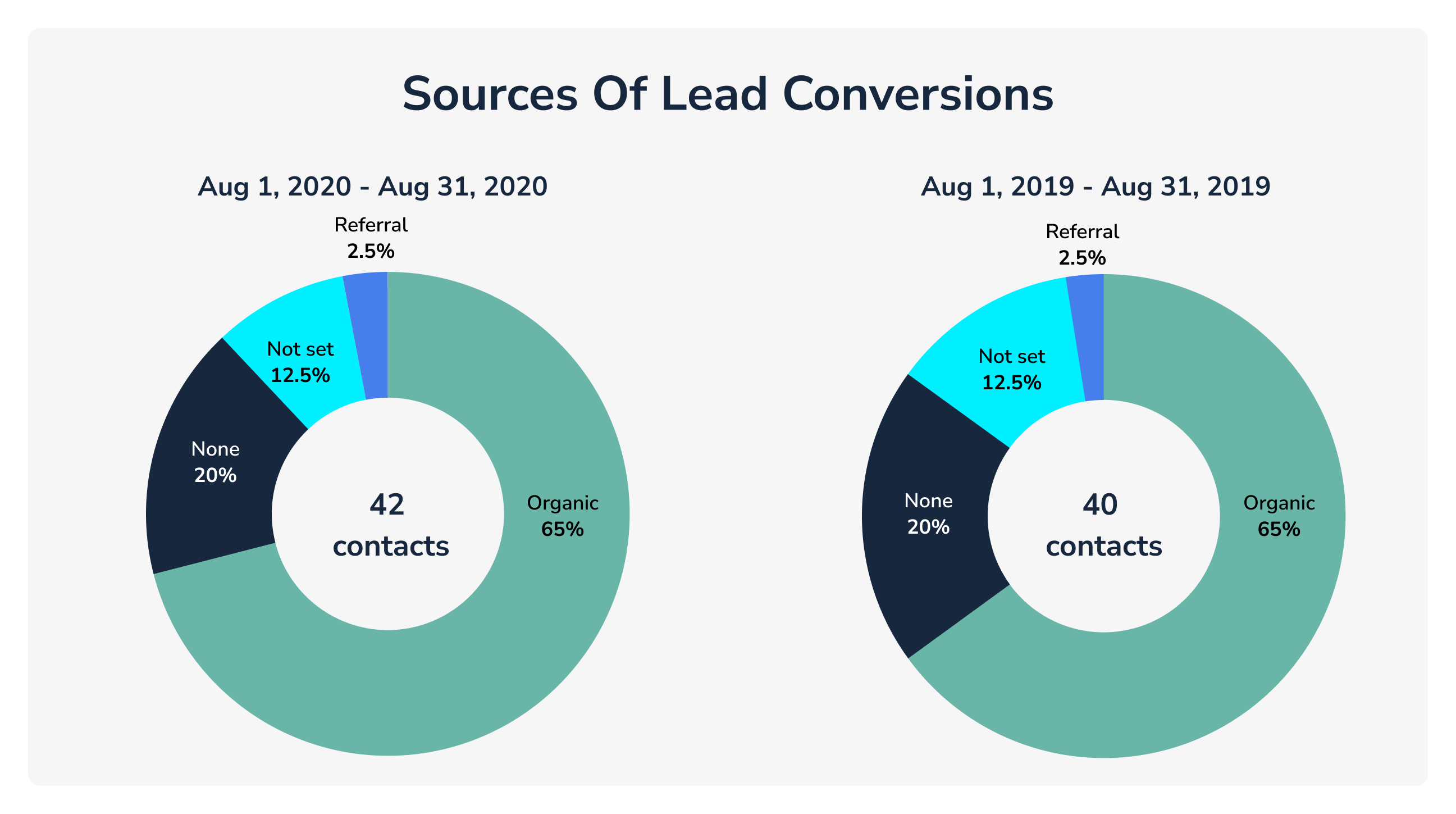
Kao Collins, a global industrial ink manufacturer, had no brand recognition 10 years ago.
That was until they started working with DBS Interactive. DBS Interactive built a high-performance website that supported multinational SEO with substantial content marketing.
The result? Kao Collins rose from virtual obscurity to dominating search results in its niche.
The integrated strategy combined web development focused on performance, content, and technical SEO, PR, social media, and robust interlinking of pages and blog articles.
Results
- Improved Organic Leads: The SEO-focused overhaul ushered in a 40% year-over-year increase in organic leads for Kao Collins. More potential customers found the site via Google, and improved UX/content resulted in a higher conversion of visitors into inquiries.
- Global Brand Awareness: The integrated marketing strategy (SEO + content + PR) elevated Kao Collins’ brand worldwide, turning a once-unknown site into a go-to authority. DBS “propelled Kao Collins onto the world stage” and established a strong digital presence globally. This translated into more B2B sales opportunities.
- Improved Search Visibility: The new website became highly discoverable by following SEO best practices (from Core Web Vitals optimization to schema markup). Kao Collins went from “invisible to irresistible” in search, now appearing at the top of results for key inkjet industry keywords, which drove a significant uptick in qualified traffic.
2. Mighty Small Homes – Mighty Growth Through SEO
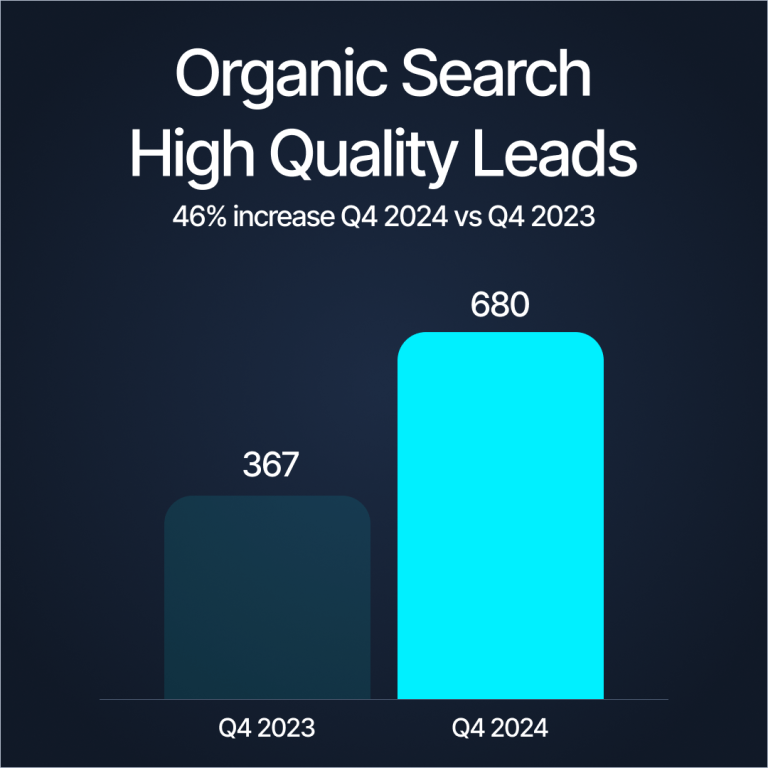
Mighty Small Homes, a young prefabricated home kit manufacturer, needed to create demand and credibility from the ground up.
DBS implemented an integrated digital strategy – including a new lightning-fast website, clustered content strategy, technical SEO, social media integration, and PR – that rapidly transformed Mighty Small Homes from an idea born out of needing more housing into a market leader.
Results
- Rapid Search Ranking Gains: The new site achieved first-page rankings for 100+ high-volume keywords within 3 months of launch by deploying extensive schema markup and SEO-driven content. This leap in visibility meant that when people searched for tiny/prefab homes, Mighty Small Homes appeared front and center.
- High-Quality Traffic & Engagement: DBS’s multichannel approach fed the site with engaged visitors. For example, social media campaigns were tightly integrated – keyword-optimized posts linked to targeted landing pages – to drive organic traffic. This influx of engaged users increased traffic and lifted overall SEO performance (more engagement signaled relevance to search engines). In short, content + social + SEO worked together to amplify reach.
- Explosive Lead Generation: The website featured an interactive custom Quote Tool for home kits to convert the growing traffic. This tool immediately became the site’s #1 lead generator.
- Business Impact—Dominating the Market: The company has become a major player in the prefab kit-home industry at a time when housing is needed the most. Organic search visibility supported a steady flow of leads and inquiries, which meant increased sales growth and a higher ROI. Mighty Small Home’s online credibility and reputation became more robust, helping the company establish itself as a leading brand against larger competitors.
Foundation
Learning from yesterday helps you plan tomorrow’s successes.
In SEO, scrutinizing data and market conditions shapes a more effective strategy. Correlating actions taken to results identifies tactics that worked and, equally important, what didn’t.
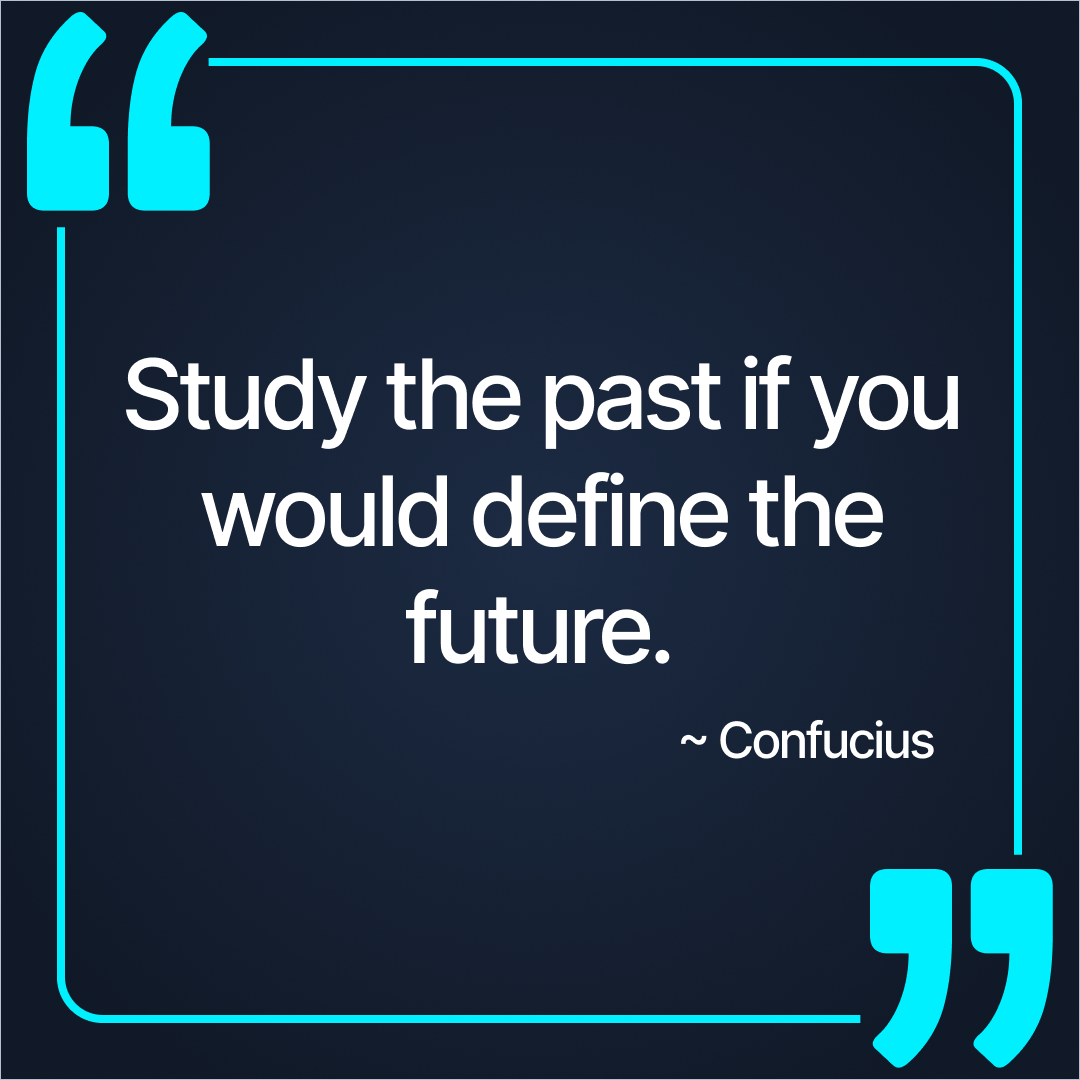
Marketers gain a better understanding of user preferences and search trends.
This process makes it easier to set realistic goals and avoid repeating mistakes.
Analytics
Website analytics tools like Google Search Console and Google Analytics capture valuable, rich information about your website visitors and provide a lens for analyzing their motivations.
These tools track the keywords users search for before arriving on your site, the pages they click, how long they stay, and where they exit.
That's just the beginning.
Key Insights
- Popular search queries: Keywords and questions that bring people to your site.
- User engagement: Which pages visitors spend time on (and for how long).
- Exit points: Where users leave your site or stop engaging.
Data helps refine content, identify relevant topics to attract your audience, improve user experience, and increase your presence in Google, Bing, and other search engines.
Competition
The search experience plays a significant role in guiding customers through the sales funnel.
It's important to understand your competitors. Know where they land in search results for the keywords you're battling to win.
Ask yourself: What signals is their website sending to search engines, and what strategies are they using to attract search engines to their content?
Build a Competitive Content SEO Strategy
Know your rivals: Identify who else ranks for your target keywords.
Analyze their content: Look at the topics, content types, and formats that may be appealing.
Adapt continuously: Winning requires small moves. Adjust, analyize, and then repeat.
Technical Backbone
While keywords often steal the spotlight in SEO discussions, the unsung hero behind high search rankings is a solid technical foundation. Think of it as building a house: without sturdy beams and a strong framework, the fanciest décor (or, in this case, keywords) won't hold up.
1. Lighthouse, Core Web Vitals, and Performance
Google’s Lighthouse tool is like a wellness check for your website, diagnosing performance, accessibility, and more. Core Web Vitals evaluate whether your site delivers a smooth, frustration-free experience.
Yes, the following terms are a mouthful. Your development team needs to get them right.
B2B users expect the same seamless, fast, and intuitive experience on business websites as they do on the sites they browse in their time. If your site feels sluggish or unstable, they’ll move on like any frustrated visitor.
| Largest Contentful Paint (LCP): This evaluates how fast your largest content block, such as text or images, loads. Faster is always better for an optimal user experience. | 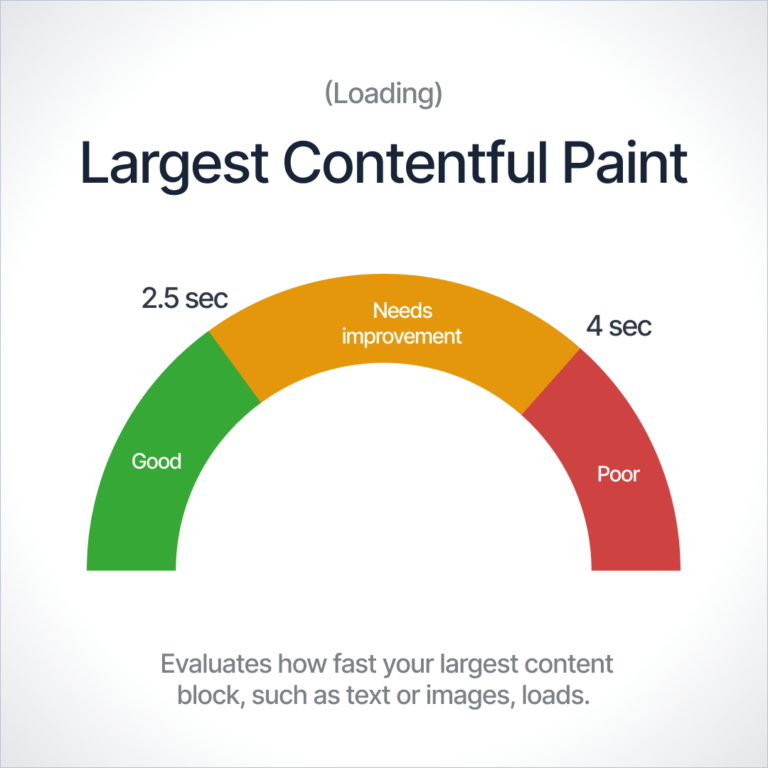 |
| Interaction to Next Paint (INP): Tracks the delay between a user’s action (like a click) and the moment the page reacts. | 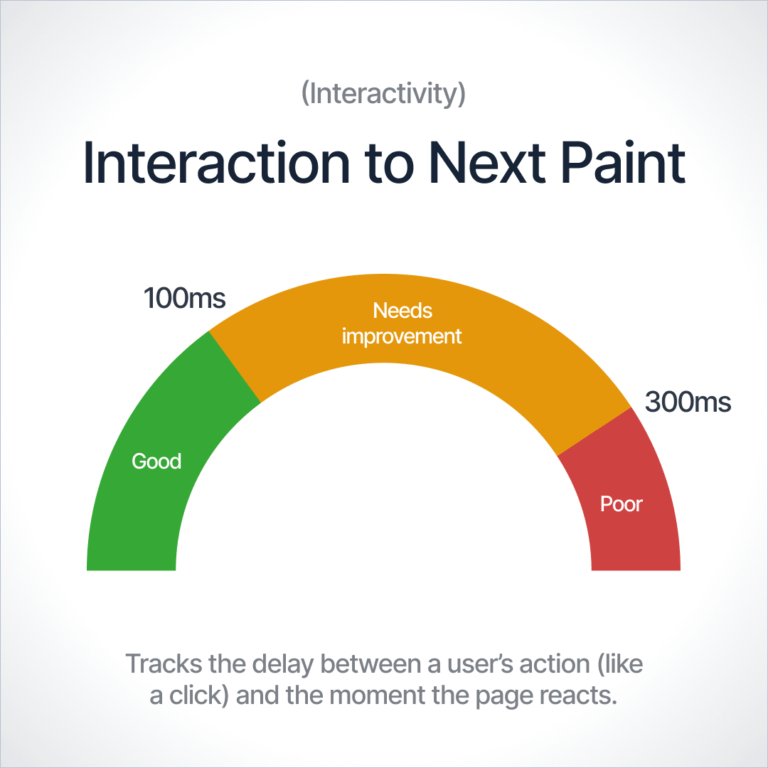 |
| Cumulative Layout Shift (CLS): Measures unexpected shifts that disrupt usability. |  |
These aren’t just technical jargon. These user experiences are another signal for search engines to consider when serving your link in search results.
Optimizing them pays off with a site that loads fast, stays steady, and keeps visitors engaged.
2. Mobile Optimization and Progressive Web Apps (PWA)
With over 60% of web traffic coming from mobile devices, ensuring a mobile-friendly and responsive design is no longer optional. Google prioritizes mobile-first indexing.
Search engines understand this, prioritizing mobile over desktop browsing for ranking webpages.
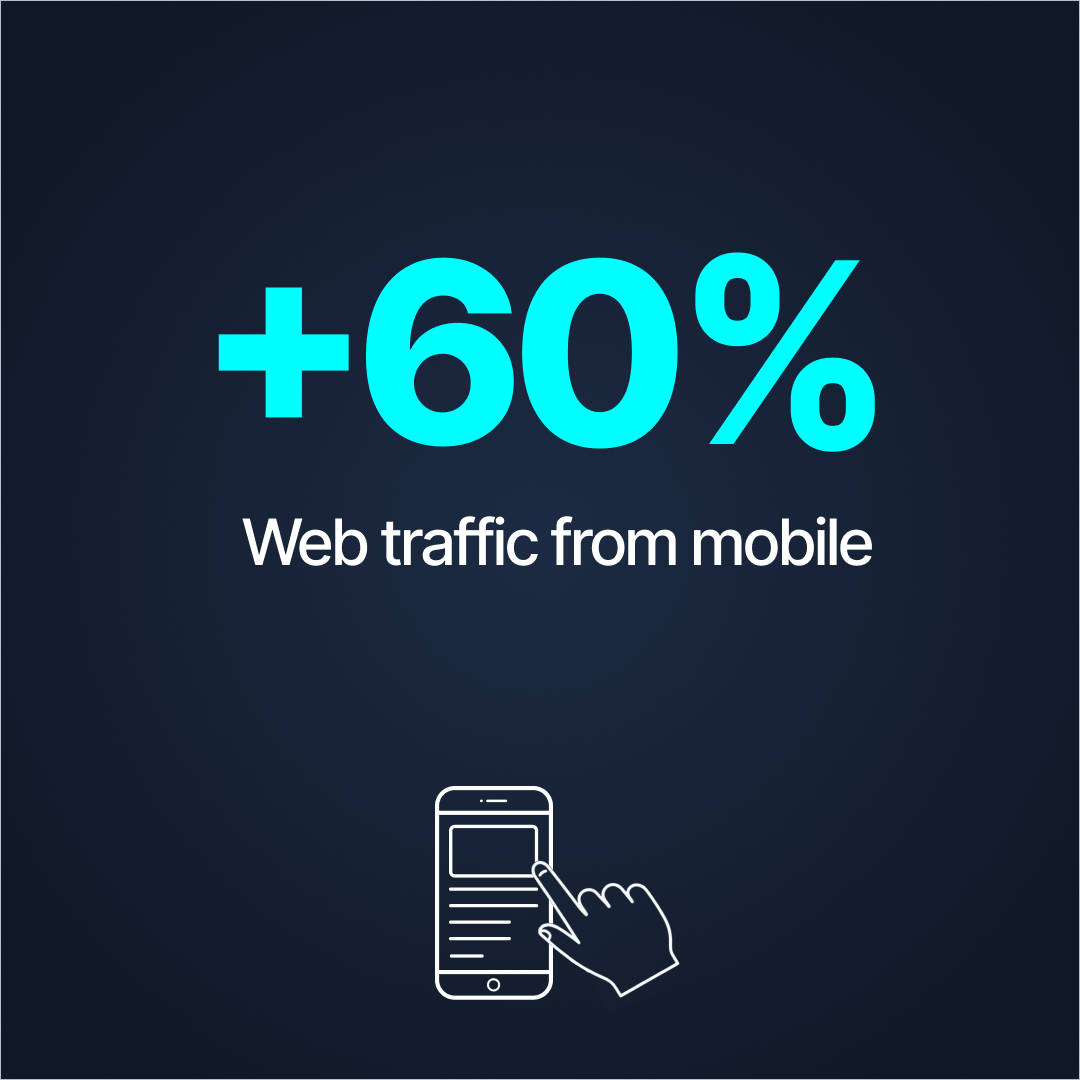
Progressive Web Apps (PWAs) elevate the user experience with fast, app-like performance that minimizes load times and enables offline access.
An optimized mobile site engages users, drives more conversions, and helps you rank higher in search results.
3. Schema Markup for Search Engines
Search engines love schema markup because it gives them a clearer understanding of your page’s content, making it easier to deliver relevant results.
For B2B websites, schema markup is especially valuable because it helps search engines understand and showcase technical specifications, product features, pricing, and detailed service offerings in search results.

When business prospects search for information and solutions, structured data ensures they immediately see the most relevant details in the search results without digging through multiple pages.
Schema coding blends SEO expertise and web development skills, including JSON-LD structured data formats.
Done right, schema markup helps your content appear in rich snippets, "People Also Ask" sections, and knowledge panels, maximizing visibility across the places users are searching.
The result?
Your name becomes associated with the information prospects want and is seen in as many places as possible, including generative AI platforms like ChatGPT, Copilot, and Perplexity.
4. Voice Search Optimization
"Hey, Siri." “Hey, Alexa.”
What was once a novelty is now a standard way for people to search, even for B2B products and services.
Voice-activated search has changed how users interact with search engines. Instead of keywords typed in a search window, queries are longer and conversational.
It responds to natural language queries and provides information optimized for featured snippets (using schema) and local SEO.
This includes ensuring your content is well-organized, utilizing schema markup, and prioritizing mobile-friendliness.
If your website provides concise, easy-to-digest information, you're more likely to rank in voice search results, especially for mobile and smart assistant users.
5. Accessibility and WCAG 2.1 AA Compliance
Web accessibility is both a legal requirement and a ranking factor.
Web accessibility is both a legal requirement and a ranking factor.
Adhering to Web Content Accessibility Guidelines (WCAG) 2.1 AA ensures that content is usable for all visitors, including those with permanent or temporary disabilities.
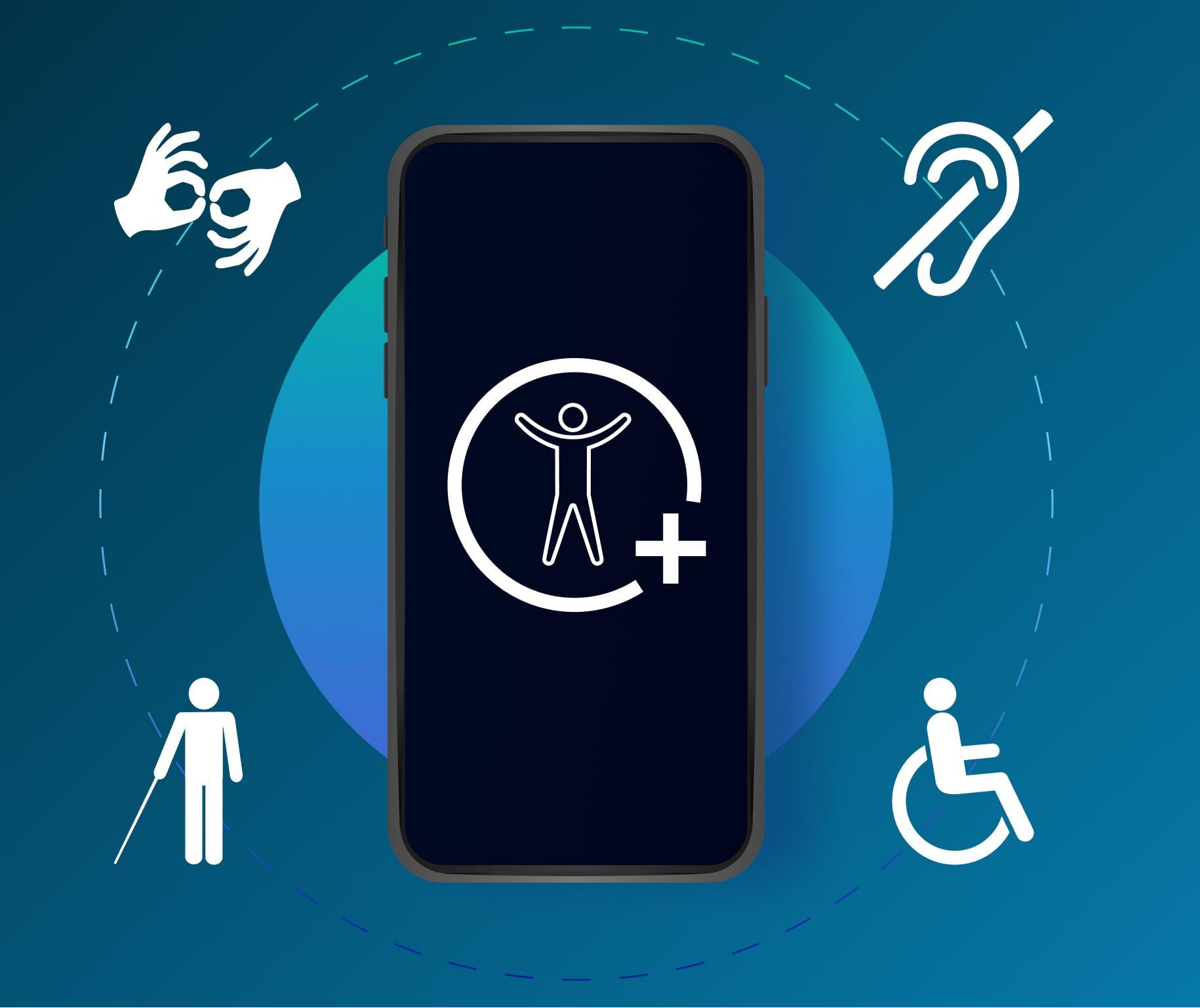
This makes business sense because it broadens your audience, opening your digital front door to visitors with visual, auditory, or motor impairments, and it improves the overall user experience for everyone.
By ensuring your website is accessible, you enhance customer satisfaction, reduce legal risk, and improve search engine rankings.
Features like alt text for images, keyboard navigation, and screen-reader compatibility enhance the user experience while improving crawlability for search engines.
Web accessibility compliance requires skills in several areas.
- Knowledge WCAG 2.1 AA
- Web Development Skills
- User Experience (UX) Design
- Content and Technical SEO
- Testing and Auditing Tools
Overall, this requires a combination of technical, design, and SEO expertise and an understanding of legal accessibility requirements.
6. Best Practices: Security, Pop-Ups, and User Experience
Nothing says "run away" faster than a website security warning. Those HTTPS letters at the beginning of a URL indicate that the website uses Transport Layer Security (TLS) to encrypt data between the website and your browser.
Users don't want to risk visiting untrustworthy websites, and Google and Bing know this and reward secure websites.

Having an HTTPS website signals to Google that your website is legitimate and secure, indicating that it is built according to Best Practices, as detailed in the component of the Google Lighthouse battery tests.
When it comes to Google Lighthouse "Best Practices," these are the technical essentials that can make or break your site’s performance and, ultimately, its search rankings.
These practices help ensure your site is fast, secure, and easy to use.
- HTTPS: Transport Layer Security (TLS) certificates (formerly SSL) securely encrypt data sent between your browser and website
- JavaScript Errors: Keep your site error-free for better functionality and indexing.
- Image Optimization: Compressed images speed up load times.
- Supported APIs: Use current web technologies to stay relevant.
- Caching: Reduces load times and boosts SEO.
- Main-thread Work: Minimize delays in interaction to improve user experience.
Applying these best practices will improve user experience and increase performance in search engines.
7. Sitemap and Logical Navigation
B2B buyers are busy. They don’t have time to hunt for information or navigate a confusing website. A well-structured site makes it easy for them—and search engines—to find what they need fast.
![]()
An XML sitemap ensures search engines index pages accurately, while effective internal linking helps distribute SEO authority across your site and create content relationships that boost rankings. Internal linking also helps users dig deeper into relevant content.
Clear, intuitive navigation keeps visitors engaged, reduces bounce rates, and quickly guides them to the right information.
Search engines will send a user to a website that's easy to navigate.
User Journey and Experience
The user is the master you serve, and their experience determines whether they stay or leave.
A website that confuses, frustrates, or fails to deliver value is a website that loses fast. Every click, scroll, and interaction should feel effortless.
Influences on User Experience
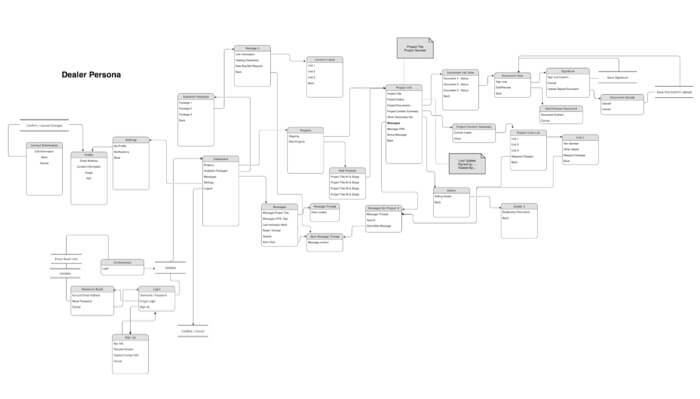
1. User Experience (UX)- Navigation, Design, and Readability
In B2B, time is money—your website should help, not hinder, busy decision-makers. A well-designed site acts as a seamless guide, making it effortless for visitors to find what they need.
Intuitive navigation keeps your business prospects moving in the right direction, clean design builds credibility, and content readability ensures details don’t get lost.
Simply, a website with less friction keeps buyers engaged.
Consider that 76% of users find easy navigation the most important factor in website design. Additionally, 88% of users are less likely to return to a site after a poor experience.
Think about it. It's like a restaurant or store. If the experience is terrible, will you return?
Prioritizing user-friendly layouts and accessible content is vital for retaining visitors and enhancing engagement.
2. Internal and External Linking
Trust and efficiency are everything for your audience and search engines.
Strategic linking guides users to the correct information while signaling credibility to Google.

Internal links keep visitors engaged by directing them to relevant content, reducing bounce rates, and encouraging deeper exploration. They also establish content relationships so search engines can better assess the content's value.
External links to authoritative sources show confidence in your content and strengthen credibility.
Done correctly, linking isn’t just good UX. It’s a key part of a strong SEO strategy that helps your site rank better and convert more leads.
3. Content Quality, Value, and Uniqueness (E-E-A-T): Writing for Your Audience
Content isn’t just about keywords. It’s about connection. High-quality, unique content keeps users engaged.
The way it’s written matters just as much.

A strong voice and conversational tone that matches your brand make information more accessible, building trust and encouraging return visits.
Emphasizing Expertise, Authoritativeness, and Trustworthiness (E-E-A-T) ensures your content speaks to real business needs, not just search algorithms.
And since 94% of first impressions are design-related, pairing compelling content with strong visuals creates a credible experience that keeps B2B buyers engaged.
Content Production and Distribution
Creating great, compelling content that properly positions your brand in your target markets is just the start of great SEO strategy.
Getting it in front of the right audience and making it stick takes strategy and a lot of effort.
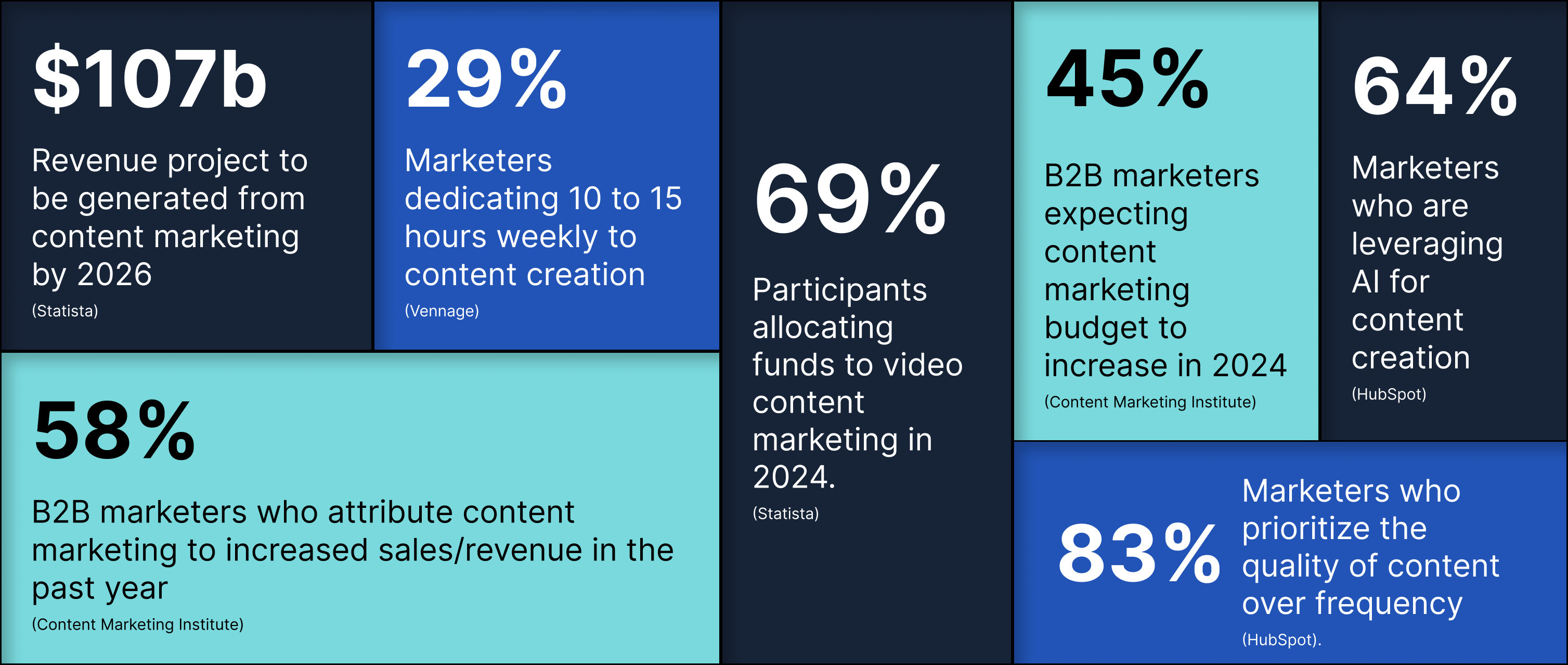
Production
- Diverse Content Formats: Employ a mix of articles, videos, podcasts, and infographics to cater to varied audience preferences and enhance engagement.
- Technical Accuracy: Ensure all content is fact-checked and relevant. Leverage subject matter experts to maintain credibility.
- Brand Consistency: Align visuals and messaging with your brand's identity to strengthen recognition and trust.
- Strategic Interlinking: Use internal links to connect related content. This helps establish topical authority and guide users through a logical content journey.
- Schema Markup Implementation: Incorporate structured data to improve search engine understanding and increase the chances of appearing in rich snippets and AI-driven searches.
- Comprehensive Asset Utilization: Develop high-quality images, videos, and graphics to support various channels, including social media, advertisements, and public relations efforts.
Getting great content it in front of your target audience drives impact. A strong distribution strategy ensures your content reaches decision-makers, builds brand authority, and generates engagement across multiple channels. Here’s how to make the most of your content:
Distribution
- Social Media: Share content on LinkedIn, YouTube, BlueSky, and industry-specific platforms to boost brand visibility, spark engagement, and drive traffic. This signals to search engines that your content is relevant, helping improve rankings and increasing its reach across search results and social media.
- Email Newsletters: Feature your latest content in a curated email to subscribers, reaching an engaged audience interested in your insights.
- Employee and Leadership Advocacy: Encourage team members and executives to share content on their networks, as personal shares carry more credibility and expand organic reach.
- Online Communities and Industry Groups: Participate in LinkedIn Groups, Slack communities, and forums by sharing relevant insights, positioning your brand as a thought leader and driving high-intent traffic.
- Content Partnerships & Guest Contributions: Share content with partners or contribute guest articles to industry publications to tap into new audiences and build credibility in your space.
- Repurpose for Different Formats: Convert blog posts into LinkedIn carousels, short videos, or podcast discussions to meet audiences where they are and make content more digestible and shareable.
By taking a multi-channel approach, you ensure that content doesn’t just sit on your website—you actively put it in front of the right people, in the right places, at the right time.
Establishing Credibility
Establishing authority is key to enhancing your website's visibility and credibility.
Key components
Social Proof
Positive reviews and testimonials from users and industry experts serve as social proof to reinforce trust and influence potential customers' decisions. These endorsements signal to search engines that your site is reputable and valued by its audience.

Earned Media
When your brand is organically mentioned across various platforms—news articles, blogs, or social media—it amplifies your reach and authority. These unsolicited mentions and active social media engagement enhance your site's relevance and prominence in search engine rankings.
Backlinks
Acquiring high-quality backlinks from reputable websites is a cornerstone of authority building. These inbound links act as endorsements, signaling to search engines that your content is trustworthy and authoritative. The quality and relevance of these backlinks significantly impact your site's ranking and visibility.
The (Not-So-New) Kid on the Block: AEO, AISO, and Generative AI Platforms
As generative AI continues to change how people search for information, businesses must maintain visibility and relevance.
Platforms like ChatGPT, Copilot, and Perplexity have reshaped how users discover content. Businesses must optimize websites and content for traditional search engines. If done effectively, the same effort works for AI-powered platforms.

Answer Engine Optimization (AEO)
AEO is about fine-tuning content to answer users' conversational queries concisely.
Content with natural language that anticipates the intent behind user searches positions websites to appear in AI-generated responses.
Artificial Intelligence Search Optimization (AISO)
AISO expands on traditional SEO by optimizing content for AI search algorithms. This involves using structured data like schema markup and maintaining high-quality, authoritative content.
The goal is to ensure that AI platforms can easily interpret and leverage your site’s content to generate accurate and relevant responses.
If you’ve been implementing best practices in SEO, you’re already ahead of the curve. Your website is positioned for traditional search engines and the generative AI tools driving the future of digital discovery.
Mighty Small Homes and Kao Collins have that foundation and appear in generative AI platforms.
While others scramble to catch up, you're ready to capitalize on the changing landscape.
Building strong technical foundations positions websites to thrive in the era of generative AI platforms. By integrating best practices in SEO, AEO, and AISO, DBS ensures that client websites are discoverable and favored by AI-driven tools.
A Journey With a Start, But No End
![]()
SEO is a journey with a start but no end. It requires continuous adaptation to ever-evolving search engine algorithms and strategies.
Regularly analyzing performance metrics and refining strategies ensures sustained growth and competitiveness.
Sweet Sounds of Success
SEO success isn't about quick tricks or shortcuts—it's about playing the long game with the right strategy.
At the same time, some may try to game the system with shady tactics. Search engines always catch up.
Google rewards sites that invest in technical strength, user experience, and valuable content. The real winners in SEO are those who embrace a well-rounded, integrated approach.
SEO, AEO, and AISO demand continuous adaptation because algorithms evolve. This means businesses must refine strategies to maintain visibility.
It requires technical expertise, content strategy, and user-focused design, which many mid-sized companies find challenging.
Winning isn’t about quick fixes or shortcuts but committing to a long-term, integrated strategy.
While some may attempt to game the system, search engines always catch up. The winners are those who focus on building a technically sound, user-friendly site with valuable, relevant content.
Companies like DBS Interactive have been positioning websites for success using SEO for traditional search. That solid foundation works for generative AI platforms. As search methods and behaviors change, strategy ensures sites stay ahead of search engines and emerging platforms.
Mastering this approach can be challenging for mid-sized businesses without the multi-disciplined talent to maintain a coordinated, long-term plan. Agency services have the expertise and are more cost-effective than hiring staff for each necessary role.
It is possible to outpace competitors and achieve sustainable growth and success.
We can discuss how we can supplement your team.
FAQs
Search Engine Optimization (SEO) involves optimizing your website to improve its visibility on search engines like Google. Higher visibility leads to increased organic traffic, which can result in more leads and sales.
SEO is a long-term strategy; it typically takes several months to start seeing significant improvements in rankings and traffic, depending on the competitiveness of your industry and the effectiveness of your strategies.
Keywords are the terms and phrases that users type into search engines. Incorporating relevant keywords naturally into your content helps search engines understand your site's relevance to those queries.
Mobile-friendliness is crucial for SEO, as search engines prioritize sites that provide a good user experience on mobile devices, affecting your site's ranking.
Backlinks, or inbound links from other websites, act as endorsements for your content. High-quality backlinks signal to search engines that your site is authoritative and trustworthy, positively influencing your rankings.




